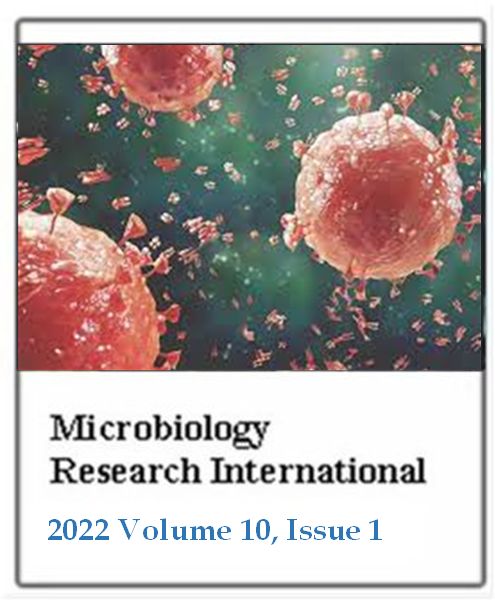Bacteria pathogens of the edible frog Hoplobatrachus occipitalis (Gunther, 1858) in the hydrographic basins of Benin
L. Codjo, E. Y. Attakpa, C. K. Boko, S. S. Fayalo, R. Tohozin, E.O.R Pelebe and I. Imorou TokoMicrobiology Research International
Published: January 28 2022
Volume 10, Issue 1
Pages 1-9
Abstract
The consumption of the meat of certain animals from the natural environment with an unknown microbiological status exposes humans to more serious zoonoses caused by feared pathogens. The present study was carried out to identify the pathogenic microbiological flora of the edible frog, Hoplobatrachus occipitalis, used as a source of animal protein by several Beninese families, to assess the health quality of this meat. According to ISO 6887-2, the isolation and identification of bacterial species were carried out on a population of 135 specimens of H. occipitalis fished in three hydrographic basins of Benin (Niger, Mono and Ouémé basins). Their analysis revealed a positivity rate of 88.15%. Infection rates varied significantly (p ˂ 0.05) from one basin to another, i.e. 77.78, 88.89 and 97.78% respectively in Ouémé, Niger and Mono. The respective proportions of the bacteria identified were: Aeromonas hydrophila (8.15%), Bacillus anthracis (1.48%), Escherichia coli (3.70%), Enterobacter sp. (21.48%), Klebsiella sp. (4.44%), Proteus sp. (6.67%), Pseudomonas sp. (11.85%), Neisseria sp. (2.22%), Salmonella sp. (0.74%), Shigella sp. (11.11%), Staphylococcus sp. (16.30%). Although the infection rate was higher in the Mono basin, no formidable species were observed in this basin. However, germs such as E. coli were observed in the Ouémé basin, and E. coli, Salmonella sp. and Bacillus anthracis in the populations of the Niger basin. These results showed that the safe consumption of the meat of this edible frog from the natural environment raises a real public health issue given the ever-increasing demand for this meat by consumers. To encourage the consumption of this meat, it is therefore urgent to promote the breeding of this frog in aquaculture operations close to the areas of consumption. The sensitization of potential consumers could limit the risks of food poisoning incurred especially in the event of poor cooking.
Keywords: Frog, Hoplobatrachus occipitalis, pathogenic germs, meat, Benin.
Full Text PDF
